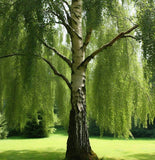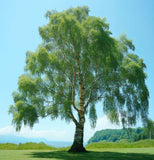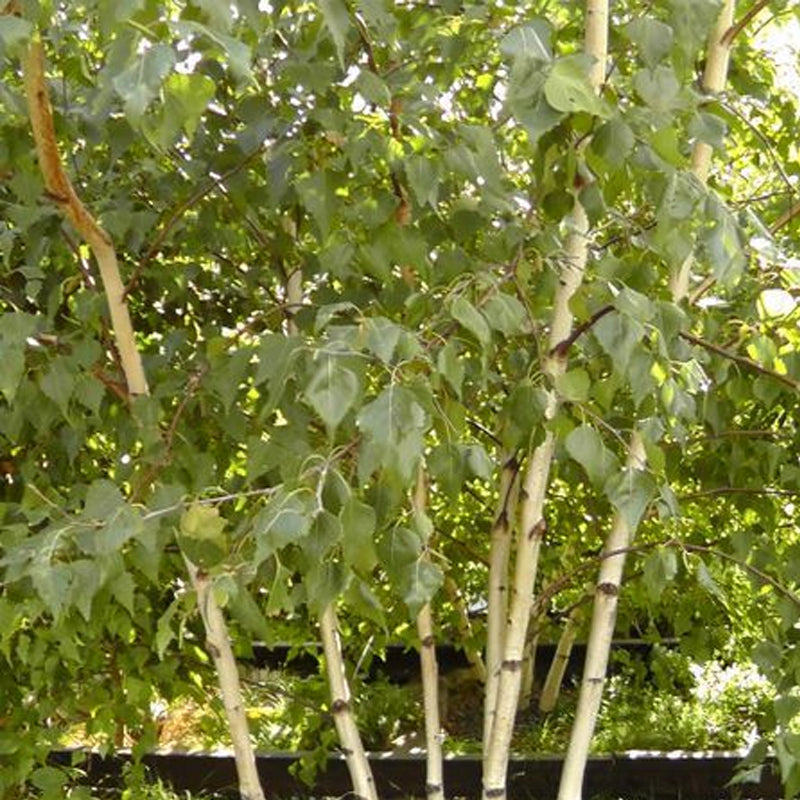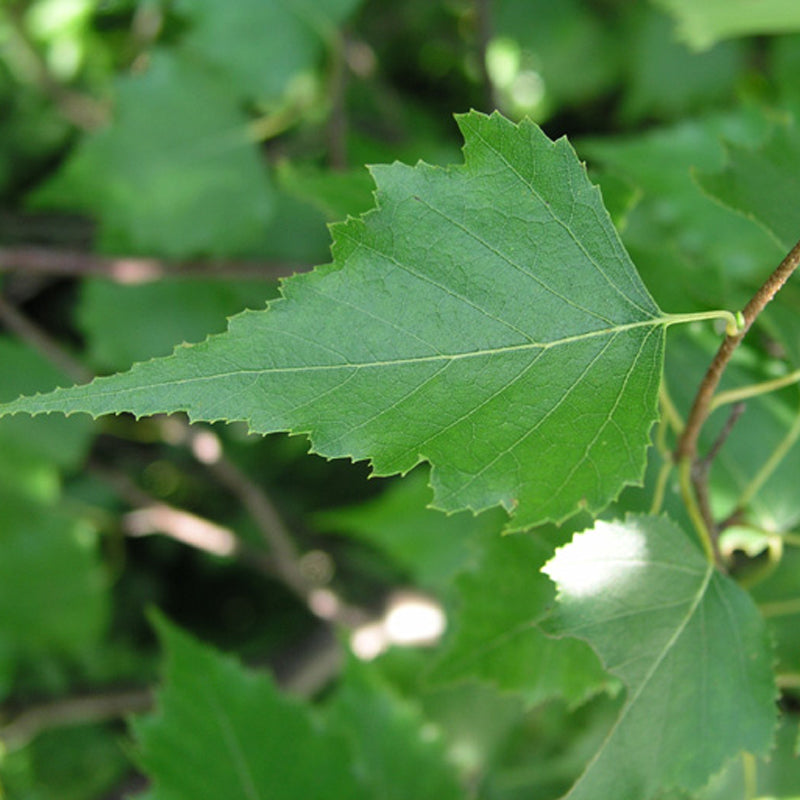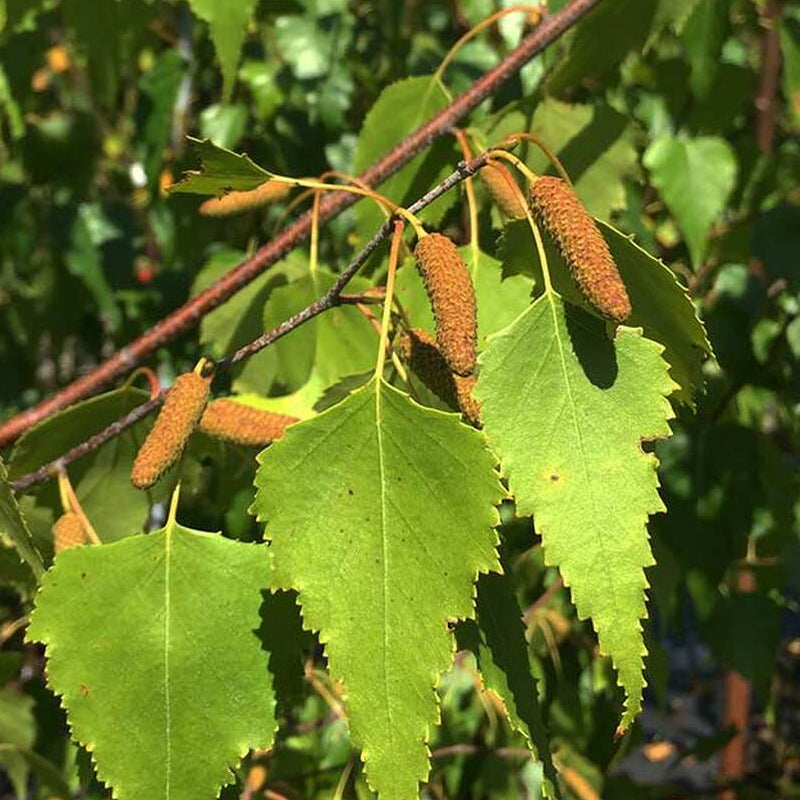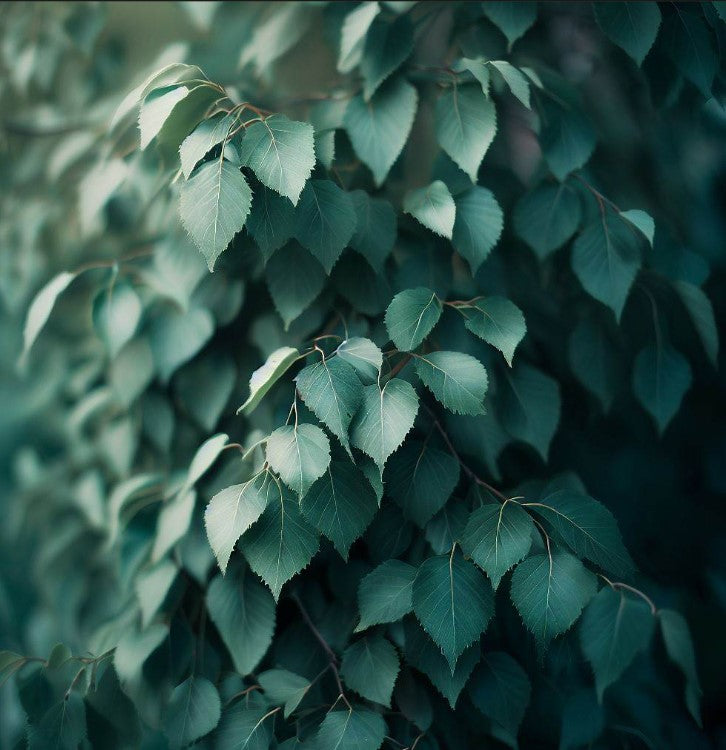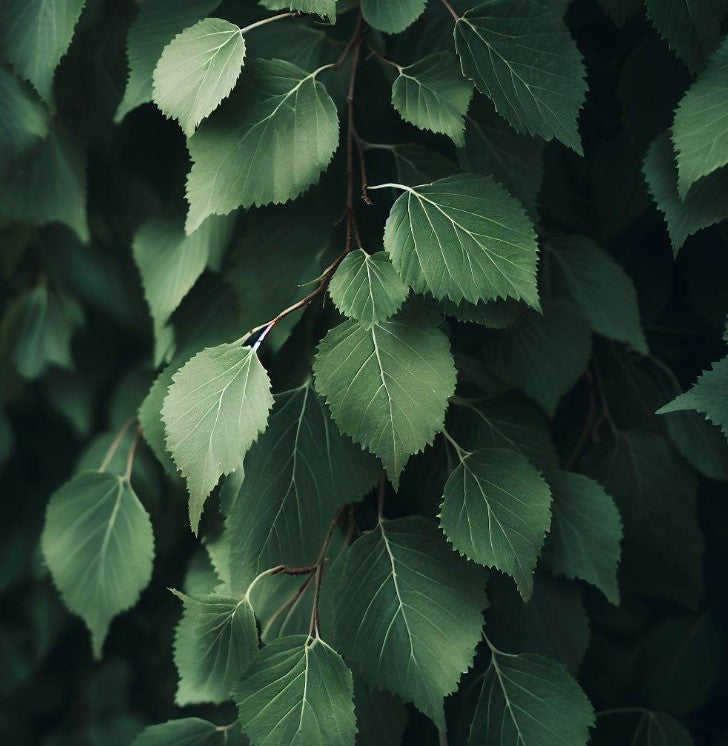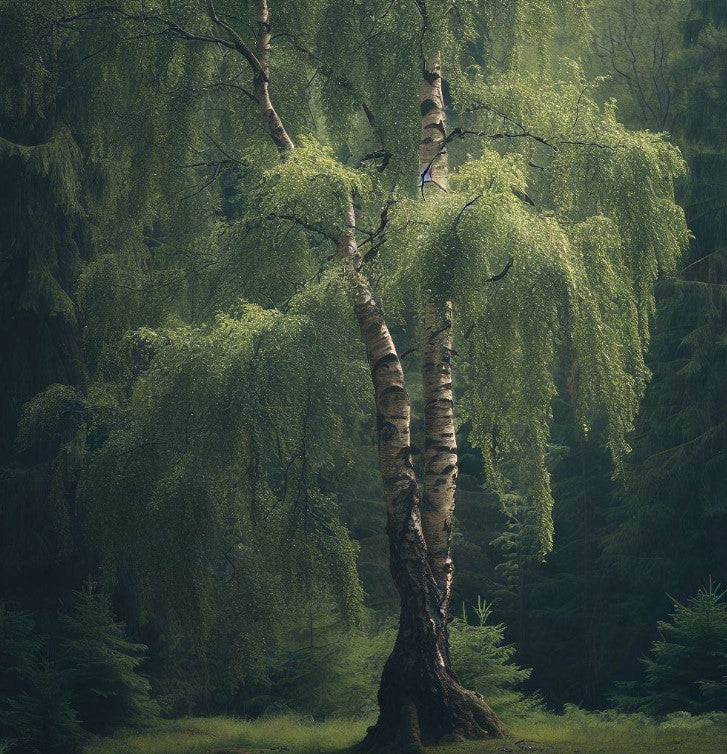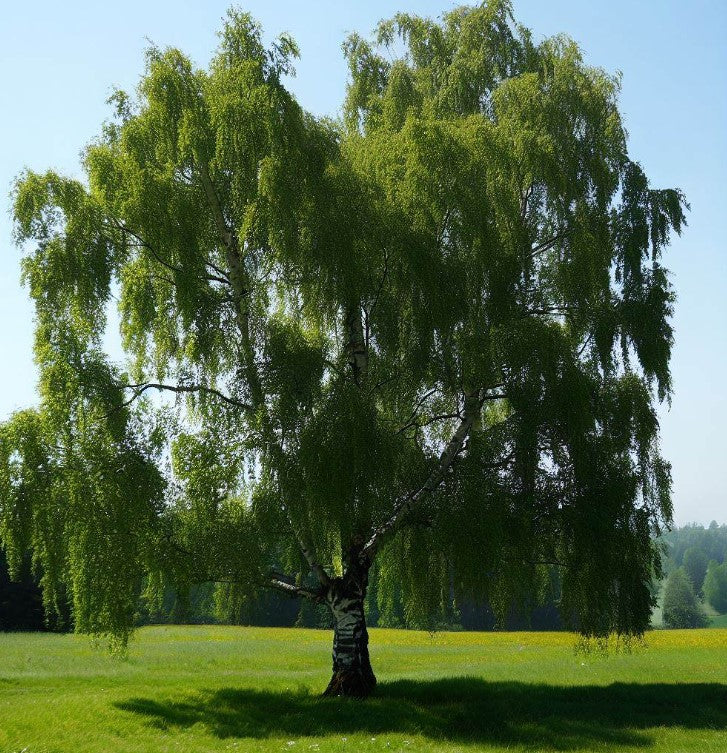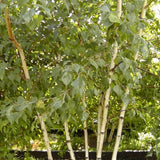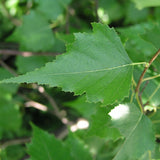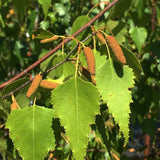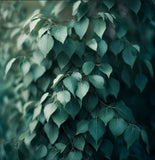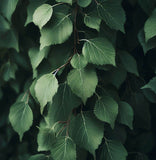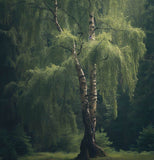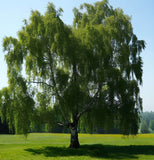Betula populifolia (Gray Birch)
Betula populifolia (Gray Birch) is a deciduous tree native to North America. It is a medium-sized tree that typically grows to a height of 30 to 50 feet (9 to 15 meters) with a spread of 20 to 30 feet (6 to 9 meters). It has an upright, columnar shape when young, which becomes more irregular and open with age. The bark is white or grayish-white with dark horizontal markings, giving it a distinct appearance.
Leaves: The leaves of the Gray Birch are simple and alternate, measuring about 1.5 to 3 inches (4 to 7.5 centimeters) in length. They are triangular or diamond-shaped with doubly serrated edges. The leaves are dark green on the upper surface and paler underneath.
Flowers: Gray Birch trees are monoecious, meaning they have separate male and female flowers on the same tree. The flowers appear in early spring before the leaves. The male flowers are catkins, long cylindrical clusters that hang down from the branches, while the female flowers are small and appear as upright clusters.
Fruit: After pollination, the female flowers develop into small, winged nutlets that are arranged in cone-like structures called strobiles. These nutlets are dispersed by wind during late summer or fall.
Habitat and Range: Gray Birch trees are commonly found in the northeastern and north-central parts of North America. They are adaptable to various soil conditions, including dry or sandy soils. They are often pioneer species, growing in disturbed areas such as abandoned fields, clearings, or along roadsides.
Ecological Importance: Gray Birch trees provide habitat and food for various wildlife species. They are an important source of food for birds, such as grouse and finches, who feed on the seeds. The trees also support a diverse range of insects that serve as food for birds and other animals.
Landscape Use: Due to its distinctive bark and attractive foliage, the Gray Birch is often used in landscaping and as an ornamental tree. It can add visual interest to gardens or naturalized areas, and its adaptability to different soil conditions makes it a suitable choice for challenging landscapes.
Botanical Name : Betula populifolia
Common Name : Gray Birch
Height : 20- 30 ft
Spread : 15 ft
Germination Info : Seed requires 30-60 days cold moist stratification
Hardiness zone : 3-7
Average seed per ounce : Approx. 50,000

